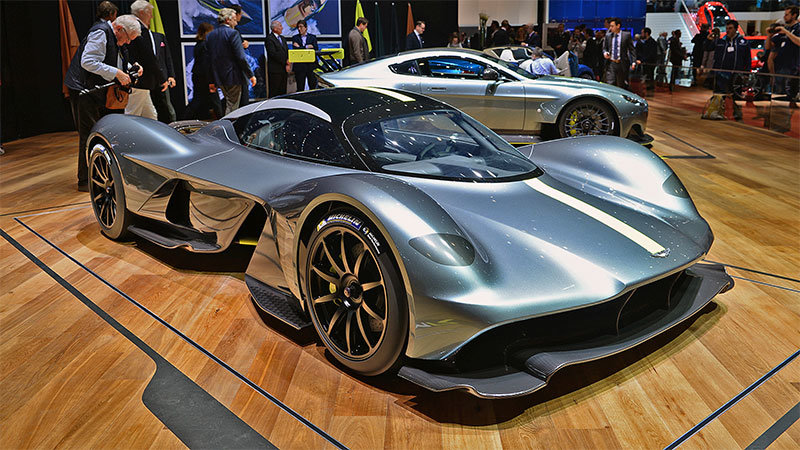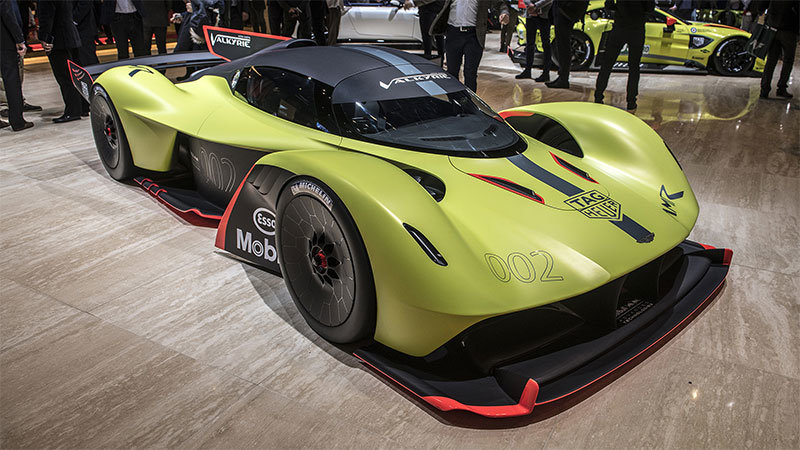Aston Martin Valkyrie gets a track package, moves closer to production-ready
Aston Martin continues to trickle out news for the upcoming Valkyrie hypercar, and today it’s telling us about an AMR Performance Track Pack that will be on offer. We’ve previously told you about the Valkyrie AMR Pro, which is a track-only version of the car Aston intends to build. This new package will be on offer to the 150 lucky folks who will be buying the road-going version of the Valkyrie.
The Track Pack consists of a new front clam producing greater downforce, a second set of exterior body panels, a track-focused suspension lowered by 2 inches, titanium braking components and magnesium wheels with carbon fiber discs covering them. All this results in lap times that are supposed to be 8 percent quicker than the standard car — an impressive improvement over a car with bonkers performance to begin with. The only catch you might ask? With the Track Pack accessories fitted, the Valkyrie loses its road-legal status like the AMR Pro. You’ll need to hand the car over to Aston for them to put it back to street-spec after your track day is done.
Aston Martin also announced some customization options that will be available for the car. The only limit here is your pocketbook, folks, as Aston’s personalization program, Q by Aston Martin, will be helping buyers make the cars exactly the way they’d like. Four designer spec themes will be offered to those not interested in total custom work. Wherever you see paint or trim, carbon fiber is most likely possible. Colors and material choices on the interior will be up to your imagination, as well. The wildest option available appears to be the Gold Pack, wherein 24-carat gold livery is laid under the paint. Check out all the pictures of custom examples Aston has come up with on its simulator up above — this is going to be one sweet car, not to mention the 1,000 horsepower 6.5-liter Cosworth V12 that revs to 11,100 rpm.
Related video:




